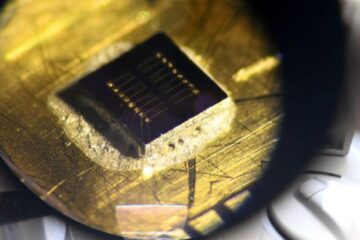Ground-breaking new insight into the development of Alzheimer’s disease

Unfortunately it is still unclear precisely which ageing process forms the basis of this spectacular rise in the occurrence of the disease. VIB scientists affiliated to K.U.Leuven have discovered an important molecular link between Alzheimer’s disease and the development of the typical plaques in the brains of Alzheimer patients. This discovery is an important breakthrough in the fundamental research into the cause of Alzheimer's disease.
Alzheimer’s disease: a growing problem
Alzheimer’s disease, a neurodegenerative disease that slowly and gradually destroys brain cells, is the most common form of dementia in the Western world. The way in which it affects the memory and mental functioning makes it one of the most frightening disorders. Over the last 15 years the amount of research worldwide into this still incurable disease has grown considerably: faster diagnosis of the disease and better treatment are essential!
Amyloid plaques and Alzheimer’s disease
Alzheimer’s disease is associated with amyloid plaques – i.e. abnormal accumulations of protein fragments – that form in the brain cells. A few years ago Bart De Strooper and other researchers unravelled the process by which these plaques develop in the familial form of Alzheimer’s disease (less common form). ß-secretase, which cuts proteins at a specific location – plays an important role here. Sometimes the secretase cuts in the wrong place, which results in a by-product and thus the formation of plaques. In the most common form of the disorder the same sort of plaques are found, but there is still little known about their development mechanism.
BACE1 or ß-secretase
In patients with the most common form of Alzheimer’s disease the brain cells show an increase in the protein BACE1 or ß-secretase. VIB researcher Sébastien Hébert and colleagues, under the direction of Bart De Strooper and in collaboration with international experts, looked into the cause of this increase.
To this end the VIB researchers checked the expression profiles of certain microRNA’s, i.e. the short pieces of RNA that regulate protein production. In patients where there was an increase in the BACE1 protein, there was a significant reduction in miR-29a and miR-29b-1. This observation suggests the possible role of certain miRNA’s in the increase of BACE1 and in the formation of plaques in the brains of patients with Alzheimer’s disease.
On the one hand this research raises hopes for a better diagnostic test. Timely prescription of certain medicines for Alzheimer’s disease results after all in a better response, and thus a better quality of life for the patient. On the other hand there is the question of whether these microRNA’s could in the future form the basis of a new drug.
Media Contact
More Information:
http://www.vib.beAll latest news from the category: Health and Medicine
This subject area encompasses research and studies in the field of human medicine.
Among the wide-ranging list of topics covered here are anesthesiology, anatomy, surgery, human genetics, hygiene and environmental medicine, internal medicine, neurology, pharmacology, physiology, urology and dental medicine.
Newest articles

Sea slugs inspire highly stretchable biomedical sensor
USC Viterbi School of Engineering researcher Hangbo Zhao presents findings on highly stretchable and customizable microneedles for application in fields including neuroscience, tissue engineering, and wearable bioelectronics. The revolution in…

Twisting and binding matter waves with photons in a cavity
Precisely measuring the energy states of individual atoms has been a historical challenge for physicists due to atomic recoil. When an atom interacts with a photon, the atom “recoils” in…

Nanotubes, nanoparticles, and antibodies detect tiny amounts of fentanyl
New sensor is six orders of magnitude more sensitive than the next best thing. A research team at Pitt led by Alexander Star, a chemistry professor in the Kenneth P. Dietrich…





















